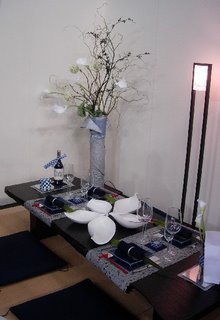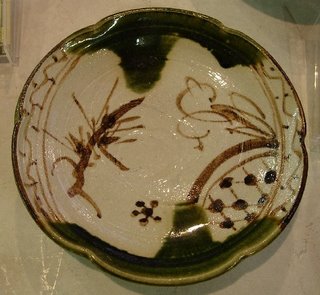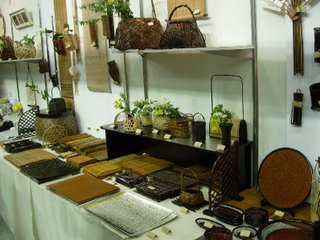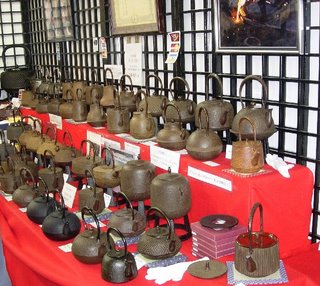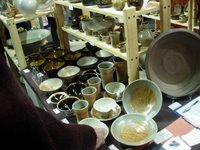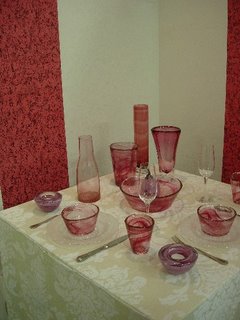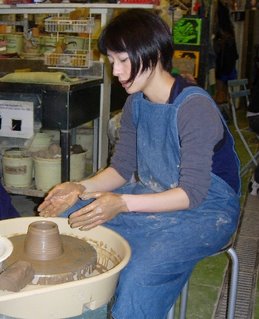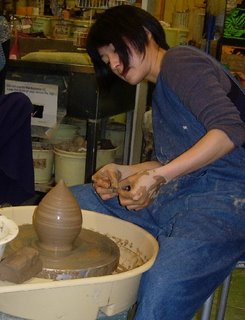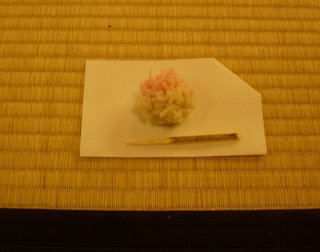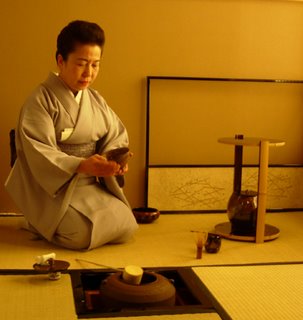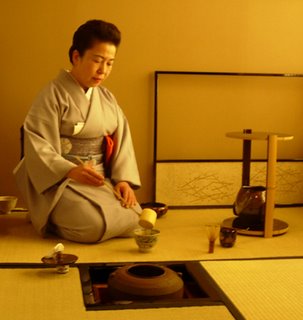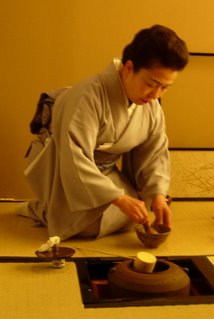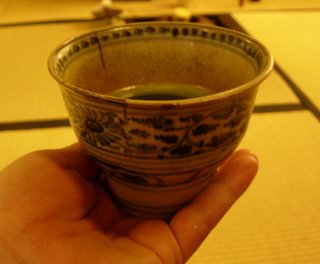 Euan Craig gave a workshop in Mashiko at the Tao International Tougei Center of Furuki-san on Feb 22-24 for the student and parent potters of the International School of the Sacred Heart from Tokyo. This was organized by the head of the art department Steve Tootell.
Euan Craig gave a workshop in Mashiko at the Tao International Tougei Center of Furuki-san on Feb 22-24 for the student and parent potters of the International School of the Sacred Heart from Tokyo. This was organized by the head of the art department Steve Tootell.http://www.d1.dion.ne.jp/~euan/
Euan started out with how to wedge clay and then how to throw cups and bowls. Then the girls and parents started to wedge clay and throw pots. There were beginners and some who already knew how to throw. Kusakabe-san was also there and we helped where we could.

The next day, Euan showed how to trim the cups.

Euan had brought a plaster m
 old from a face and showed how to make slabs and put one in the mold. The moisture of the clay goes in the dry plaster mold. The clay slab releases and you have a face mask.
old from a face and showed how to make slabs and put one in the mold. The moisture of the clay goes in the dry plaster mold. The clay slab releases and you have a face mask.
They made a mask from Jill's face. First, you put on a lot of vaseline on your face, so, the mask will not stick when you take it off. Then you put wet bandages, big and small strips, with plaster of Paris on the face. You leave the nostrils open.

After 10 minutes you can take off the mask and go clean up your face.
This is a negative of your face.
After the mask is completely dry, you fill it up with clay, take the plaster bandage mask from the clay and you have again a positive of your face.

Here, Jill cleaned her positive face and corrected and modeled it, so, it would be ready to make the plaster mold.

You build a wooden box around the head and fill the cracks. Then you pour the plaster in the wooden box on the clay face and let it harden.
This face mold is again a negative of your face. And from this mold you can take a lot of face masks.
 With another project Euan showed how to build a face stand.
With another project Euan showed how to build a face stand.First, he filled a bag of newspaper with sawdust, which he can shape in a hollow form. He put a precut slab on the newspaper and started building the sides.

He filled the inside with sawdust and put the second slab on the sawdust, which kept the shape. The slab will not collapse. When it is hard enough to put it up, he will empty out the sawdust.

He put the face on the stand.
It was a great workshop with a wonderful group of people. It felt good to be back in Mashiko.
You can watch this video made by Steve Tootell about the workshop: http://www.youtube.com/watch?v=IqxBT0dOIBo











